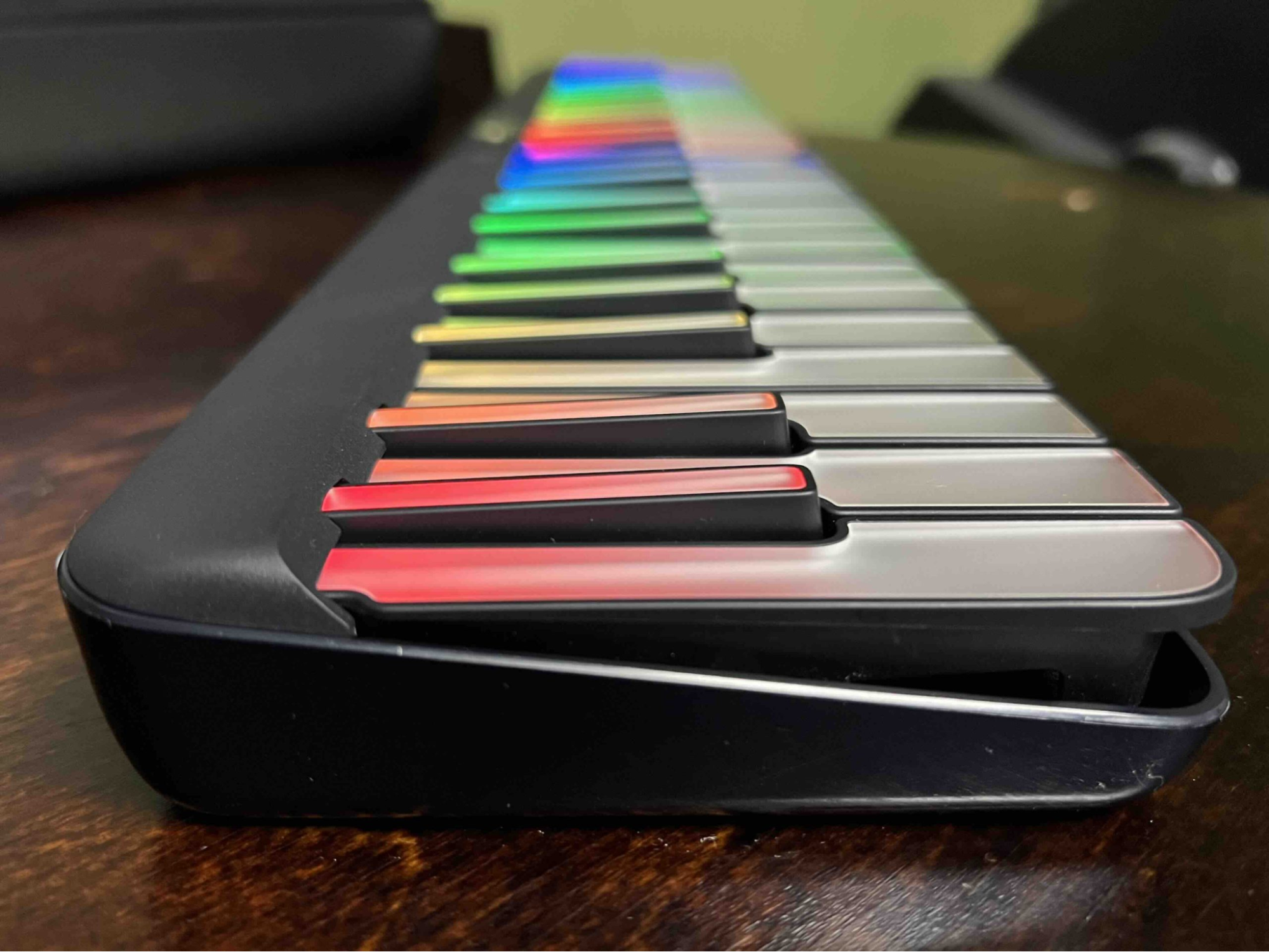
Playing your keyboard shouldn’t be limited by power outlets. Whether you're a home practice enthusiast or a traveling musician, understanding the best way to power your keyboard is crucial.
This guide explores powering options including USB‑C, batteries, and power banks, while addressing common concerns like piano keyboard power cord types, adapters, and troubleshooting when your piano keyboard won’t power on. You’ll also discover tips for portable keyboards like the Smart Keyboard.
USB‑C is becoming a standard for portable keyboards, offering:
Tip: Use certified USB‑C cables and chargers to prevent voltage issues and ensure safety. Learn more about USB‑C power standards.
Some keyboards accept AA or rechargeable batteries, giving you true mobility:
Quick Tip: Rechargeable NiMH batteries can save money and reduce environmental impact.
For USB‑C keyboards, a high-capacity power bank is a practical solution:
Note: Ensure the power bank output matches your keyboard's voltage and current requirements.
Despite modern options, some keyboards still rely on dedicated power adapters:
Tip: Use surge protectors to protect your keyboard from electrical spikes.

Even with the right power source, keyboards may occasionally fail to turn on. Common steps:
Tip: For portable keyboards like the Smart Keyboard, using multiple power options provides flexibility and peace of mind.
Tip: Always carry at least one backup power method to avoid interruptions during practice or performance.

Before selecting a power source, check the keyboard’s specifications:
Tip: Using a power source that doesn’t match these specs can damage the keyboard or reduce performance. For example, the Smart Keyboard supports both USB‑C and adapters, giving you versatile options.
USB‑C Advantages:
Traditional Adapter Advantages:
Decision Tip: If you practice at home primarily, adapters may be simpler. For travel or mobile practice, USB‑C is often superior.
For keyboards that accept AA or rechargeable batteries:
Tip: For outdoor gigs, a combination of battery power and a backup USB‑C power bank ensures uninterrupted play.
When using a USB‑C power bank:
Extra Tip: Some power banks include USB‑C PD (Power Delivery) support, which is ideal for keyboards with fast charging capabilities.
Tip: Always test your keyboard with different power methods to understand battery life and performance.
Extra Tip: Surge protectors are recommended for traditional adapters to protect against voltage spikes.
If you’re taking your keyboard on the road:
Tip: A dual-power option keyboard reduces the risk of losing practice time during travel.
With the growing adoption of USB‑C and portable charging:
Tip: Investing in a versatile keyboard now ensures you won’t outgrow your power options in a few years.
USB‑C and high-capacity power banks offer mobility, while traditional adapters are ideal for home use. Batteries are convenient for temporary setups.
Only use chargers that meet the keyboard’s voltage and current requirements to avoid damage or insufficient power.
Common reasons include dead batteries, faulty cords, incorrect adapters, or internal issues. Testing different power sources helps identify the problem.
Yes, if the output matches the keyboard’s specifications. Certified USB‑C power banks reduce the risk of overvoltage.
Many USB‑C keyboards support pass-through charging, allowing you to play while the device charges.
Powering your keyboard doesn’t have to be complicated. From USB‑C fast charging and portable power banks to traditional adapters and batteries, choosing the right option depends on your setup, portability needs, and practice habits. Explore flexible solutions with the Smart Keyboard to enjoy uninterrupted play anywhere.
Read more

Use Headphones with Digital Keyboards Without Lag
Learning piano or playing a keyboard should be smooth and immersive. But latency—the tiny delay between pressing a key and hearing the sound—can disrupt your practice and timing. This guide explain...

Calibrate Light Sensors on Light‑Up Keyboards (Step‑by‑Step)
If you own a light up keyboard, you know how satisfying it is to watch the keys illuminate as you play. But what happens when the lights are inconsistent or unresponsive? Calibrating your keyboard’...